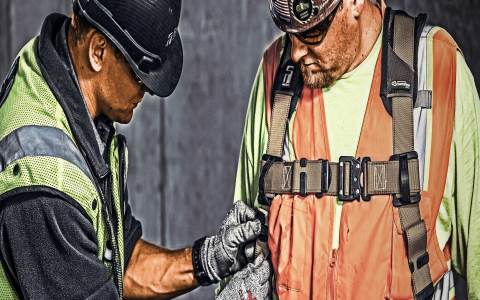My DIY Seatbelt Belt Project
Alright, let me tell you about this little project I tackled recently – making a belt out of an old car seatbelt. Sounds a bit weird maybe, but hear me out. I was just getting fed up with regular belts. You know, the leather ones stretch, the holes wear out, or the cheap metal buckles just give up after a while. I needed something tough, something that would just last.

I remembered messing around with cars back in the day, and how sturdy those seatbelts felt. The click of the buckle was always so solid. So, the idea popped into my head: why not make a belt out of one?
First thing was getting the parts. I didn’t have an old car sitting around, so I took a trip down to the local junkyard. Spent a bit of time wandering around, looking for a car with intact seatbelts that weren’t too grimy. Found a decent one, a dark grey colour which I thought would look pretty good. The guy there let me have the whole mechanism – the buckle, the latch plate, and a good length of the webbing – for just a few bucks. Bargain.
Getting it home, the first job was cleaning it. Gave the webbing a good scrub with soap and water, let it dry out completely. The buckle mechanism just needed a wipe down and a quick spray of WD-40 to make sure it clicked nicely.
Next up was figuring out the length. I measured my waist, added a bit extra for slack, and marked the webbing. Cutting this stuff was tougher than I expected! Regular scissors barely made a dent. I ended up using a really sharp utility knife, scoring it carefully and then cutting through. The tricky part was stopping the end from fraying immediately. I tried melting it slightly with a lighter, which worked okay, kind of sealed the fibers together.
Now, attaching the latch plate to the cut end. My first thought was sewing. Big mistake. My sewing machine just laughed at the thick webbing, and doing it by hand was going to take forever and probably look messy. Plan B. I remembered having some heavy-duty fabric glue and some small clamps. I folded the cut end over the bar on the latch plate, applied a generous amount of the glue, and clamped it tight overnight. I wasn’t sure it would hold, but I also added a couple of small metal rivets I had lying around, drilling tiny pilot holes first and then hammering the rivets flat. It felt super secure after that.

Making Sure It Worked
- Cleaned the webbing and buckle thoroughly.
- Measured and cut the webbing to the right length.
- Sealed the cut end carefully with heat.
- Attached the latch plate using strong glue and rivets.
- Let it all set properly for a day.
So, the final result? Honestly, I’m pretty pleased with it. It’s incredibly strong, obviously. The buckle clicks securely every time, and there’s no way this thing is stretching or breaking anytime soon. It’s not exactly high fashion, you know, but it has this rugged, practical look that I quite like. Plus, it’s comfortable enough to wear all day.
It was a fun little project, taking something designed for one thing and using it for another. Cost next to nothing and solved my problem of belts constantly wearing out. Definitely feels good using something I put together myself, especially when it works this well.
